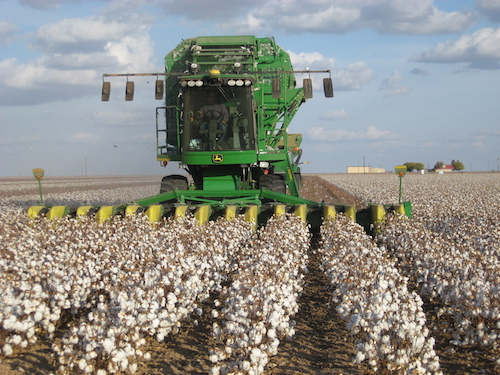The cotton market has had a wild ride over the 3rd quarter of 2016, especially compared to the mundane trading range of the past 24 months. Coming out of the July 4th holiday, the market prices escalated quickly, mainly from speculative buying, but also from crop concerns around the globe and the projected lowering of world stocks due to smaller acreage and the spelled-out details of the Chinese Reserve Auction. This made raw inputs higher for Barnhardt, but we were able to maintain a level sales price for the 3rd quarter. From the exit of the range on July 8th, the market accelerated from .6581 to .7798 in less than one month’s time, peaking on August 5th. This is not an unusual occurrence, as speculators tinker with the commodity markets.
Lack of Rain Contributes to Higher Prices
While the U.S. crop started off very promisingly, lack of rains in key growing areas of West Texas and South Georgia during July and early August contributed to the rise in prices, along with the slow-to-develop monsoons in India. This will definitely have a direct correlation to where prices for finished goods will be heading into the fourth quarter—and continuing on into 2017.
Still, World Crop Continues to Grow Overall
During September, we have seen the world crop likely get larger as key rounds of rain have peppered West Texas dry land areas, giving that crop another chance to make decent-to-good yields. Fall heat units, as well as a late frost, will be very important if that crop is to reach potential, however. The Indian monsoons have come and gone, but most experts are expecting a good crop out of India, as well as Pakistan. The market should find a home in a slightly higher range as harvest commences after two months of herky-jerky action, from the old .6200-.6600 range to a new home of .6600-.7000.
Prices Will Stabilize Over the Next 18 Months
Cotton demand seems to be improving and ending stocks; China and the ROW (Rest of the World) are heading in the right direction, implying higher prices down the road. Heavy recent rains in Australia, along with the recent rise in prices, have growers there excited about cotton for the first time in years, and output could be as much as tripled from recent production. This practice could happen in other locales, including the United States, should prices rise again. It is widely expected that the .7798 high, made in early August, will likely serve as “the high” for the balance of the calendar year, if not the marketing year. We expect cotton prices to be stable over the next 18-month period.
